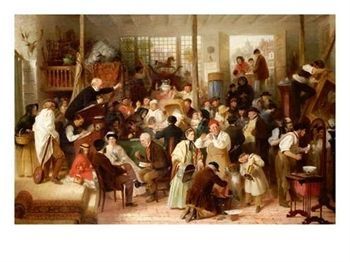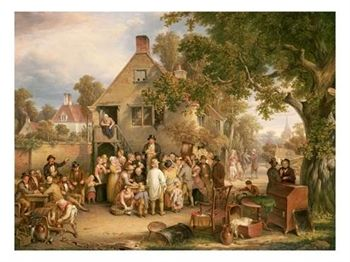
Art Auctions:
Buying and Selling Art
Art Auctions: Buying and Selling Art
Buying and selling art can be a lucrative profession as well as an enjoyable pastime. Attending art auctions can be profitable, entertaining, and a great place to meet fellow art enthusiasts. There are tips and tricks to enhance your buying and selling experiences in the art world. Not only are there several types of auctions, but there are also several types of art buyers. Whether you are an art collector,  investor, or dealer, art auctions give you the opportunity to procure pieces that will appreciate over time.
investor, or dealer, art auctions give you the opportunity to procure pieces that will appreciate over time.
Types of Art Auctions
Auctions can be broken down into three types: estate, consignment, and mixed. They can be held at a person’s residence, which is usually the case with small estate auctions, at a person’s place of business, in the case of consignment auctions, or in storage warehouses where items are often sold in lieu of unpaid rent. Interesting art pieces can be found at any one of those events.
The goal of an estate auction is to sell all remaining items of a former residence. An estate auction will normally not place any reserves on items (a reserve is the minimum amount for which an item will be sold). Hence, estate auctions are ideal for finding bargains as everything must be sold no matter how low the offer.
Conversely, at consignment auctions, fixed minimum prices are set on specific items, and if an item does not recover the set price, it will not be sold at that particular time. Consignment auctions will usually hold weekly sales, with the lowest prices being offered mid-week. Mixed auctions will sell items from smaller estates and will accept consignments as well.
Finding Art Auctions
The easiest way to find art auctions in your area is to do a search online. Simply type in your topic and your city and you should be able to find a list of the auctions being held in your vicinity. Another avenue is to check the local newspapers and dailies. Nearby antique or art stores can be useful resources as they often carry pamphlets or fliers advertising regional art auctions and sales. Lastly, explore online auction sites such as eBay, where you can purchase articles without leaving the comfort of your home.

Preparation
Before attending an auction, it is wise to confirm the date, place, and time. Be especially savvy by attending the preview, where potential bidders can examine the items to be sold at their leisure. Some auction sites will have previews a few days prior to the auction, while others open their doors only for a few hours preceding the auction. Upon arrival at the preview, you may register as a bidder. Be sure to ask about premiums when you register as some auctioneers add 10% to the highest bid or take commission from the selling price. It is important to know which policy will be used in order to avoid paying more than you bargained for. Bring a note pad and pencil with you to jot down the details of items that are of interest. Also note the item’s code so you will know the item when it goes up on the auction block. Art auctions can be fast-paced, and one can easily get caught up in the excitement, so decide beforehand what your top offer will be on your chosen items, and do not allow yourself to go above those set amounts.
Types of Art
In accordance with its use, artwork can be divided into three categories: decorative art, collectable art, and investment art.
Decorative art is used to enhance spaces. It is often thematic and will add flair and personality to a setting. The art pieces are rarely originals by famous artists and generally possess little intrinsic value. Decorative art does not usually appreciate in value, and therefore is not a lucrative investment.
Collectable art refers to art pieces that are bought based on the assumption that there is already an existing market for them because there are other interested parties. It is unwise to hold on to collectable art in the hope that it will eventually become more valuable. If it is a handsome piece, keep it, but if it holds no strong interest to you, sell it. Collectable works are not long-term investment worthy.

Investment art will almost always become more valuable in time. This type of art is recognized for its quality, rarity and uniqueness, and therefore will always fetch a handsome price from an avid art collector, investor, or dealer.
General Tips on Art Auctions
There are exceptions to every rule, but here are a few guidelines to consider when buying/selling items at an auction:
· Horizontal pictures are better-liked than vertical ones
· Works featuring girls are more popular than those featuring boys.
· Landscapes prove to be more interesting than seascapes.
· Pictures depicting images of life are more appreciated than death scenes.
· Domestic animals or those in a docile setting are more desirable than wild animals.
· An artist’s experimental pieces are not as valuable as those from his/her main body of work.
Donovan Gauvreau
Art Historian, Donovan Gauvreau lectures about art therapy with a focus on creativity development. He believes we can learn from the great masters in art to communicate ideas and feelings through painting. He provides content for www.AaronArtPrints.org to educate and inspire people to take a glimpse into an artist's life to better understand the meaning behind their work.












